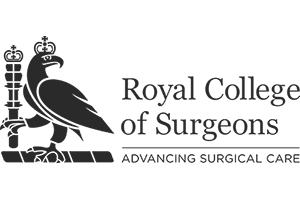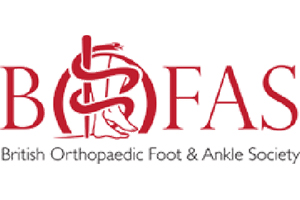This is an operation to “fuse” or stiffen the three main joints of the back part of the foot (hence “triple fusion”).
Why would it be done?
Triple fusions are done for two main reasons:
(1) Arthritis of the joints, because of a previous injury that has damaged the joints, a generalised condition such as osteoarthritis or rheumatoid arthritis, or because the joint is just wearing out for some other reason
(2) Severe deformity of the foot, such as a flat foot, high-arched or “cavus” foot, a club foot or other deformity. Sometimes these can be corrected by breaking and reshaping the bones, but in other cases it is best to stiffen the joints in the corrected position, particularly if the joints are already stiff or the foot is weak.
If the damage or deformity is limited to one or two of the foot joints it may be possible to treat it by a more limited operation. However, as these joints work together, damage to one is often accompanied by damage to others.
We often inject local anaesthetic or steroid into damaged joints, before any surgery is considered, to see whether this helps the pain. In some people, this gets rid of the pain and surgery is not necessary. In others, pain relief does not last but the results of the injection helps us to decide which joints to fuse.
What does it involve?
Two cuts are made, one along the outer side of the foot and one on the inner side. Usually these are 4-5 cm long. Each of the three joints is opened up and the joint surfaces removed and, if necessary, reshaped to correct a deformity. The joints are then put in the correct place and fixed together with screws, pins or staples. The heel (“subtalar”) joint is usually fixed with a screw passed through a small cut in the back of the heel. The other joints are fixed through the main cuts.
It is usually necessary to put some extra bone into a triple fusion to get it to heal and to fill any gaps in the fusion left by correcting deformity. Often this extra bone can be obtained from the bone that is cut out to prepare the fusion. Sometimes there is not enough bone from this and bone has to be taken from the tibia bone just below the knee. Occasionally if a large amount of bone is required then this must be taken form the pelvis just above the hip.
Some people who have foot deformities have a tight Achilles tendon (“heel cord”) or weak muscles, or both. The Achilles tendon may be lengthened during surgery by making three small cuts in the calf and stretching the tendon. Some people with deformities of the foot also have deformed toes. Again, these may be corrected at the same time or at a later operation.
How long would I be in hospital?
Most people who are reasonably fit can come into hospital on the day of surgery, having had a medical check-up 2-3 weeks beforehand. After surgery your foot will tend to swell up quite a lot. You will therefore have to rest with your foot raised to help the swelling to go down. This may take anything from two days to a week. If you get up too quickly this may cause problems with the healing of your foot.
Once the swelling goes down and the cuts on your foot are healing your foot will be put in plaster and you can get up with crutches and go home. The physiotherapist will teach you how to walk with crutches. We will get you up as soon as possible! Most people are in hospital for 3-4 days.
Will I have to go to sleep (general anaesthetic)?
The operation can be done under general anaesthetic (asleep). Alternatively, an injection in the back, leg or around the ankle can be done to make the foot numb while the patient remains awake. Local anaesthetic injections do not always work and in that case you may have to go to sleep if the operation is to be done. Your anaesthetist will advise you about the best choice of anaesthetic for you.
In addition, local anaesthetic may be injected into your leg or foot while you are asleep to reduce the pain after the operation even if you go to sleep for the surgery. You will also be given pain-killing tablets as required.
Will I have a plaster on afterwards?
You will need to wear a plaster from your knee to your toes until the joints have fused – usually 10-14 weeks. For the first month you should not put any weight on your foot as it may disturb the healing joints. (Occasionally touching your foot to the ground for balance is OK, but no more.)
What will happen after I go home?
By the time you go home you will have mastered walking on crutches without putting weight on your foot. You should go around like this for a month. 10-14 days after your operation you will be seen again in the clinic. Your plaster will be removed and the cuts and swelling on your foot checked. If all is well you will be put back in plaster. You should continue walking with your crutches.
About a 4-6 weeks after your operation you will come back to the clinic for an X ray. If this shows the joints are healing in a good position you can start putting most of your weight through the plaster. The physiotherapist will teach you how to do this
You will have further X rays once 3 months have elapsed. If the X rays show that the joint is fused enough to take your weight, the plaster will be removed and you can start walking without it. Some people need to stay in plaster longer than 3 months
How soon can I….
Walk on the foot?
As explained above, you should not walk in the foot for at least a month after surgery. Your surgeon will advise you when you can start taking some weight on the foot.
When you start putting weight on your foot we will give you a special shoe that you can wear over your plaster
Go back to work?
If your foot is comfortable, and you can keep your foot up and work with your foot in a special shoe, you can go back to work within 2-3 weeks of surgery. On the other hand, in a manual job with a lot of dirt or dust around and a lot of pressure on your foot, you may need to take anything up to six months off work. How long you are off will depend on where your job fits between these two extremes.
Drive?
If you have only your left foot operated on and have an automatic car you can drive within a few weeks of the operation, when your foot is comfortable enough and you can bear weight through it. Most people prefer to wait till the plaster is removed and they can wear a shoe.
Play sport?
After your plaster is removed you can start taking increasing exercise. Start with walking or cycling, building up to more vigorous exercise as comfort and flexibility permit. Obviously, the foot will be stiffer after surgery and you may not be able to do all you could before. However, many people find that because the foot is more comfortable than before surgery they can do more than they could before the operation. Most people can walk a reasonable distance on the flat, slopes and stairs, drive and cycle. Walking on rough ground is difficult after a triple fusion because the foot is stiffer. It is unusual to play vigorous sports such as squash or football after a triple fusion.
What can go wrong?
The main problem is the swelling of the foot, which may take many months to go down fully, and some people’s feet always remain slightly puffy. You may find that only trainers are comfortable for several months. Keeping your foot up, applying ice or wearing elastic stockings may help to keep the swelling down. Swelling is part of your body’s response to surgery rather than the operation “going wrong” but it is a nuisance to many people who may be concerned that something has indeed gone wrong. If you are worried about the swelling of your foot, ask one of the foot and ankle team ( your physiotherapist, nurse or surgeon) whether the amount of swelling you have is reasonable for your stage of recovery.
If you need to have a bone graft taken from your pelvis, this is often quite painful for a couple of weeks, and some people have a little numb area beneath the scar. Again, this is normal, but can be irritating.
The most serious thing that can go wrong is infection in the bones of the foot. This only happens in about 1% of people, but if it does it is serious, as further surgery to drain and remove the infected bone and any infected screws or pins will be necessary. You may then need yet more surgery to get the foot to fuse in a satisfactory position. The result is not usually as good after such a major problem as if the foot had healed normally.
About 10% of ankle fusions do not heal properly and need a further operation to get the bones to fuse – basically another ankle fusion.
Minor infections in the wounds are slightly more common and normally settle after a short course of antibiotics.
Sometimes the cuts, especially the one on the outer surface of the foot where the blood supply is not so good, are rather slow to heal. This usually just requires extra dressing changes and careful watching to make sure the wound does not become infected.
Research shows that 5-10% of triple fusions do not heal in exactly the position intended, either because the position achieved at surgery was not exactly right or because the bones have shifted slightly in plaster. Usually this does not cause any problem, although the foot may not look “quite right”. Occasionally the position is a problem and further surgery is required to correct it.
Sometimes screws or pins, especially the screw through the heel, become loose as the bone heals and cause pain or rub on your shoe. If this happens they can be removed – usually a simple operation which it is often possible to do under local anaesthetic.





